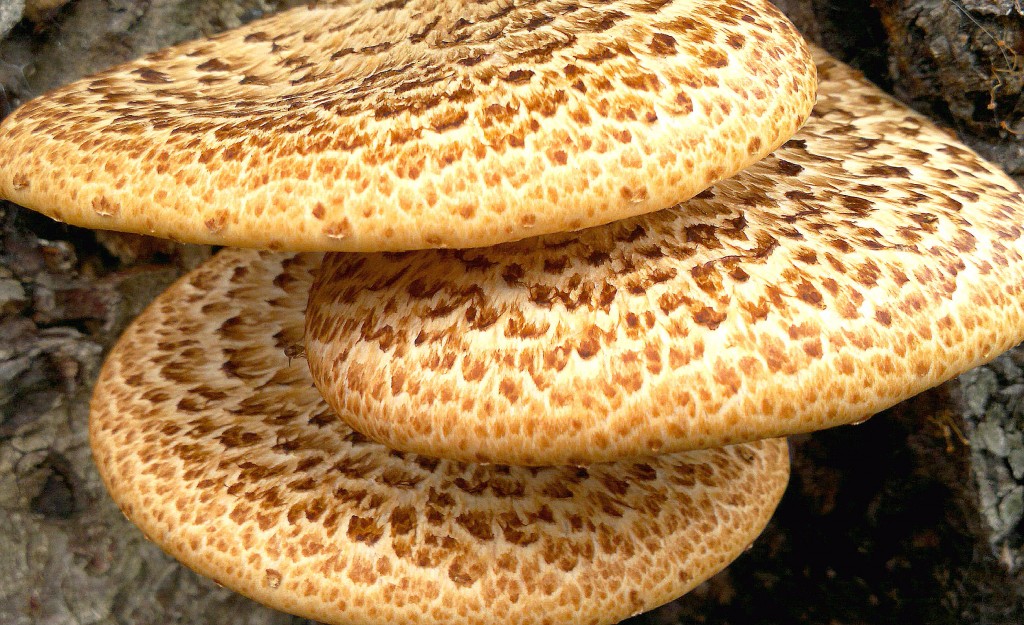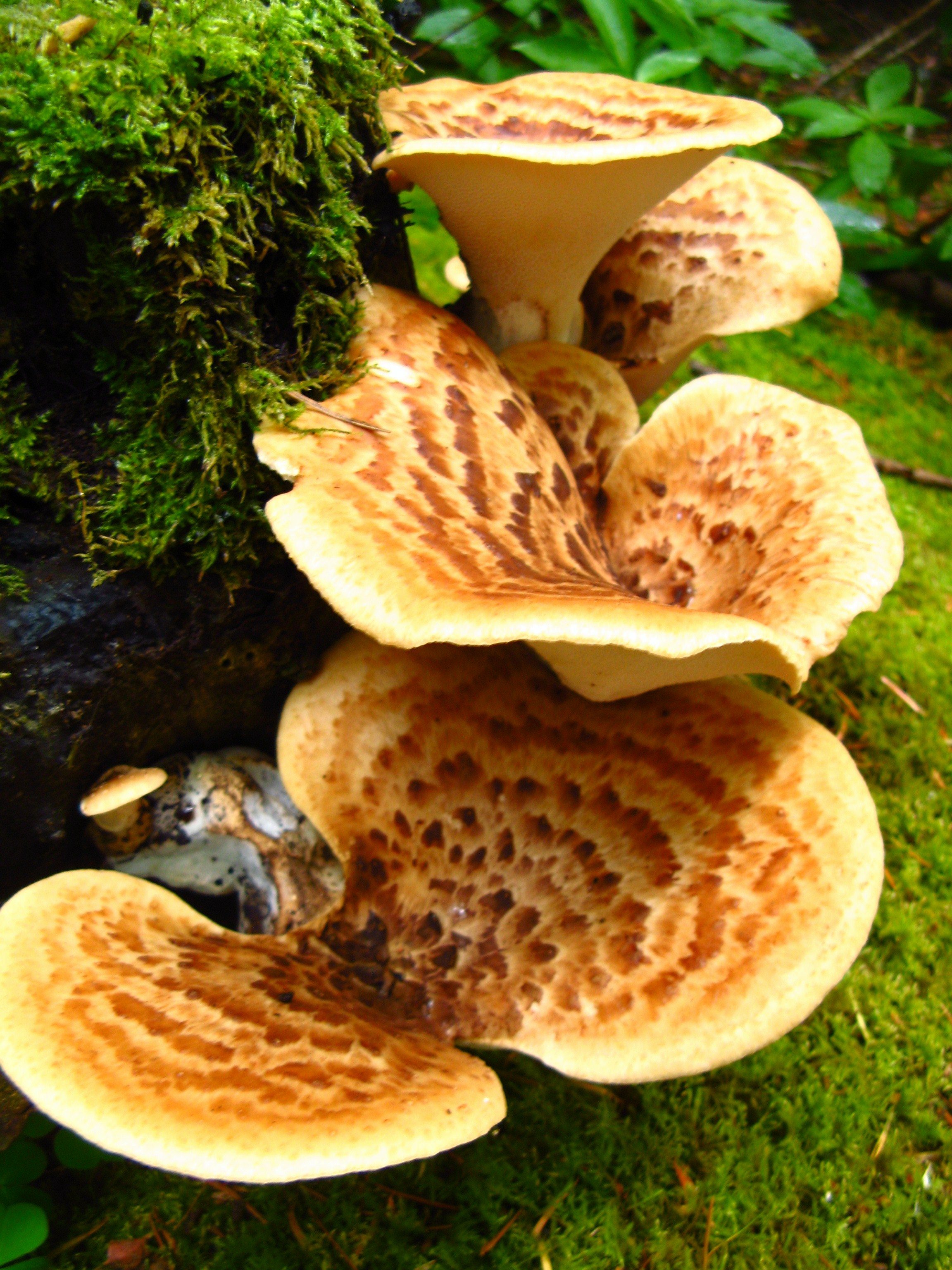Cerioporus squamosus
(Until recently known as Polyporus squamosus)
AKA Pheasant mushroom, Pheasant back

- Edibility – 1/5 – young succulent specimens only – you really need to catch them early before before they get tough and indigestible. That normally means before the brackets are more than about 6cm across. Be on the ball from the start of May because they grow really fast! If you can catch them in their youthful prime, and cook them correctly, I’d rate them up to 3/5.
- Identification – 4/5 – Cream to ochre brackets up to 70cm diameter with concentric brown fibrous scales on top, not dissimilar to the plumage on some game birds, broad (1-3mm) pores below. Partial stem.
- Ecological role – Parasitic and saprophytic on broad leaved trees, part of nature’s recycling process. Home, nursery and food to some fungal gnats.
- Considerate Harvesting – These are extremely beautiful mushrooms, often better to admire than to eat. Leave some for others (including invertebrates) to admire/use, and to spread their spores, and further help with renewing woodlands
- Distribution – 4/5 – Common and easy to spot.
- Season – April – August
- Habitat – growing as a parasite on dead and dying deciduous trees, especially elm, beech and sycamore.
I have harshly rated this beautiful fungi for edibility due to the difficulty of catching it in its youthful prime. If you do find a young ‘un, consider it a potential 2 or even 3/5, so long as you slice it thinly before searing quick and hot in a mixture of butter and oil. I’ve never had any joy with any over 8cm diameter. Even babies can be pretty tough tough and hard to digest, especially when slow cooked. If you do miss the small ones, just stand back and enjoy the beautiful colours, textures and shapes of these woodland sculptures! When they grow on fallen trees, I can easily imagine them as seats for arboreal sprites…
Also, have a smell of the pores. They remind me very strongly of watermelon! Alas, I have never quite managed to extract this flavour in useable form.
Finely chopping then mixing with 15% by weight of sea salt then leaving to ferment for 3 months makes a passable garum (umami-heavy seasoning/sauce, in the manner of nam pla or fish sauce) after straining. For more information on how to do this, see my post on razor clams, and making fish garum. The garum technique can be a bit hit-and-miss, but this simpler technique below is consistently good:
- Mushrumami – How to make umami seasoning from mushrooms
Can you spot the still-edible tot in this picture?

Dryad’s saddles can be really prolific on some trees…

- Browse more edible fungi
- In season now







